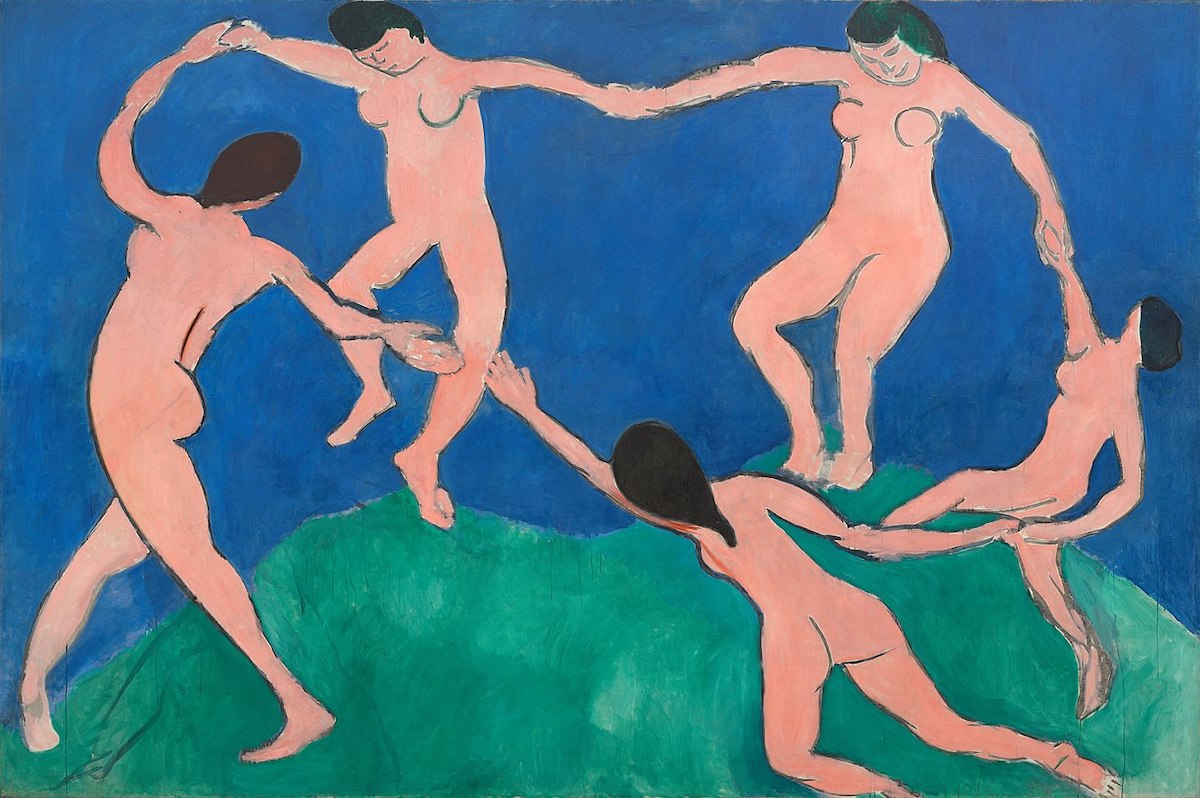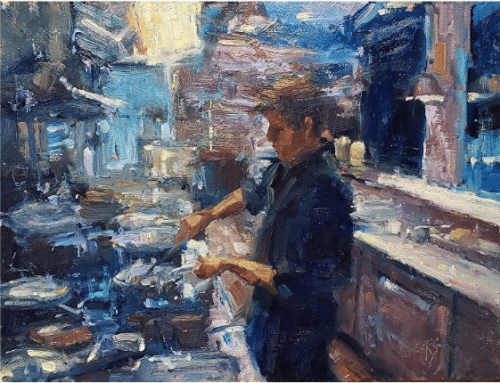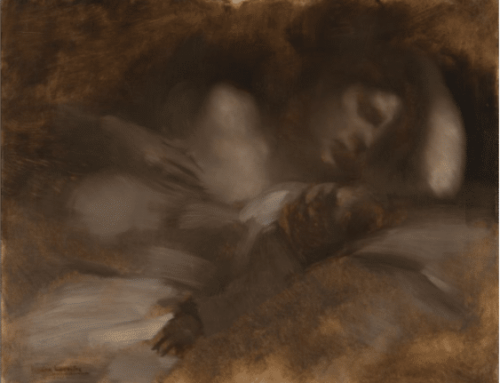“Don’t wait for inspiration. It comes while one is working.”
Matisse’s art is an exuberant celebration of life.
“What I dream of is an art of balance, of purity and serenity,” he once wrote, “devoid of troubling or depressing subject matter, an art which could be for every mental worker, for the businessman as well as the man of letters, for example, a soothing, calming influence on the mind, something like a good armchair which provides relaxation from physical fatigue.”
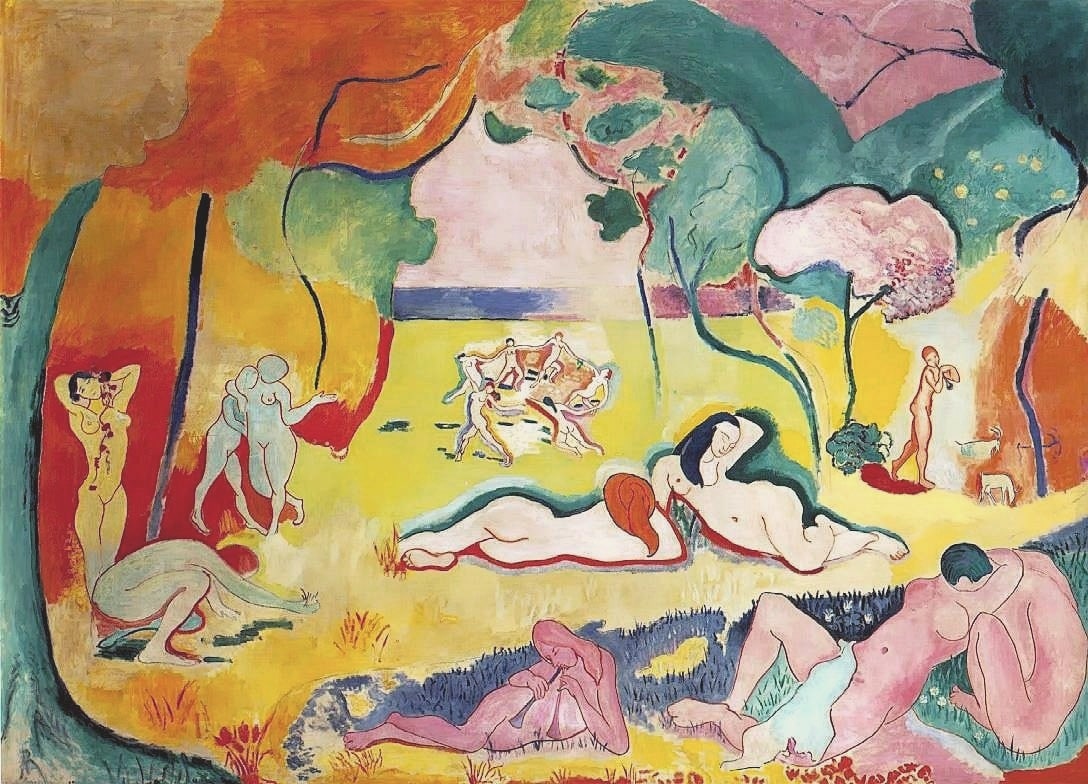
Henri Matisse, Le Bonheur de Vivre (The Joy of Life), 1905–6
Matisse studied the old masters to find how they deal with volume, line, contrasts and harmonies. However, he advised absorbing their lessons and then “forgetting” them to arrive at a means of personal expression.
“You study, you learn, but you guard the original naiveté,” he said. “It has to be within you as desire for drink is within the drunkard or love is within the lover.”
“I am unable to distinguish between the feeling I have for life and my way of expressing it.”
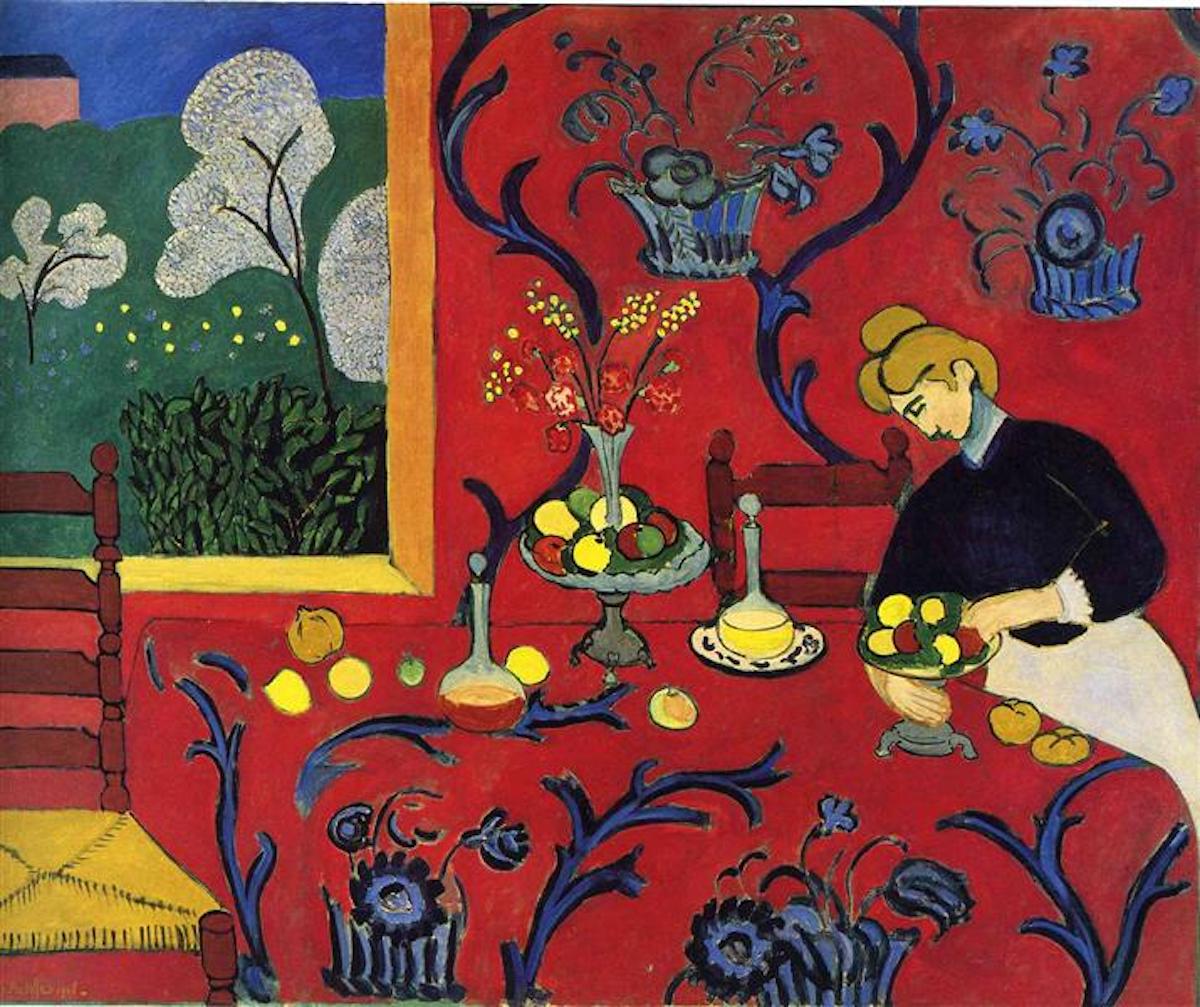
Henri Matisse, Harmony in Red, 1908
For Matisse, the feeling of joy of life could best be expressed through
- unfussy, unsophisticated forms,
- naturally expressive (as opposed to academically correct) drawing, and
- contrasting areas of pure, unmodulated color (instead of modeling or shading) to lend volume and structure his paintings.
Art historians consider Matisse, along with Picasso, a founding father of modern art. Yet judging from his writings, he primarily wanted to paint honestly and personally, to see with fresh eyes, and to stay true to his playful and wide-awake childhood self.
“The artists must see all things as if he were seeing them for the first time,” he said. “All his life he must see as he did when he was a child.”
“Creative people are curious, flexible, and independent with a tremendous spirit and a love of play.”
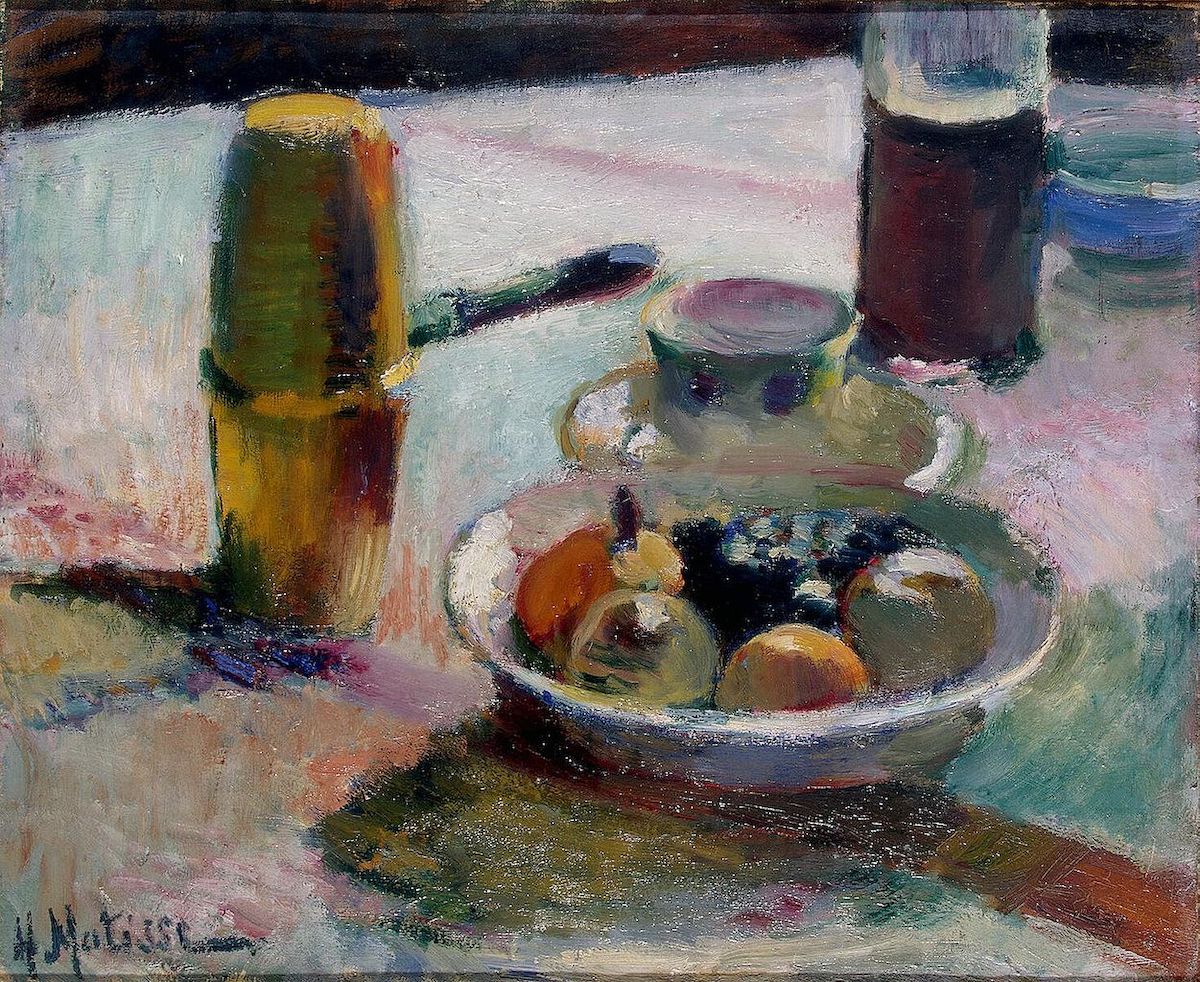
Henri Matisse, Fruit and Coffeepot, 1898
What follows is a brief collection of Matisse’s many words about art and the life of the artist.
“What you have to do is look at what you wish to express long enough and with enough attention to
discover an aspect of it that has never been seen or described by anyone before.”
“There is something unexplored in everything, because we have grown used to letting our eyes be conditioned by the
memory of what others haye thought before us about whatever we are looking at.”
“To describe a blazing fire and a tree on a plain, we must stay put in front of that fire and that tree until for us they no longer resemble any other tree or any other fire. That is the way in which you will become original.”
“Creativity is another word for courage.”
“To look at something as though we had never seen it before requires great courage.”
“The artist begins with a vision – a creative operation requiring effort. Creativity takes courage.”
“There is nothing more difficult for a truly creative painter than to paint a rose because before he can do so, he has first to forget all the roses that were ever painted.”
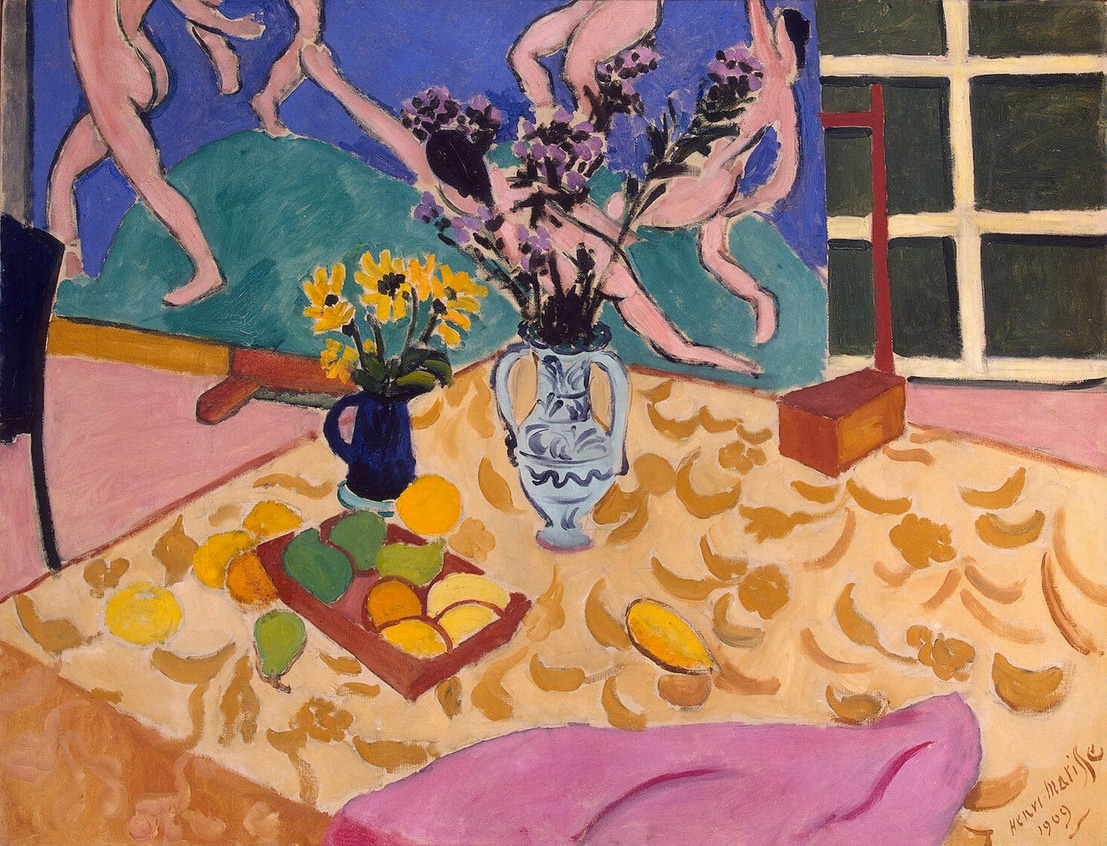
Henri Matisse, Still Life with Dance, 1909
“All art worthy of the name is religious.”
“I do not literally paint that table, but the emotion it produces upon me.”
“I wouldn’t mind turning into a vermilion goldfish.”
– Henri Matisse.
Show of the Late (1930s) Matisse Coming to Philly
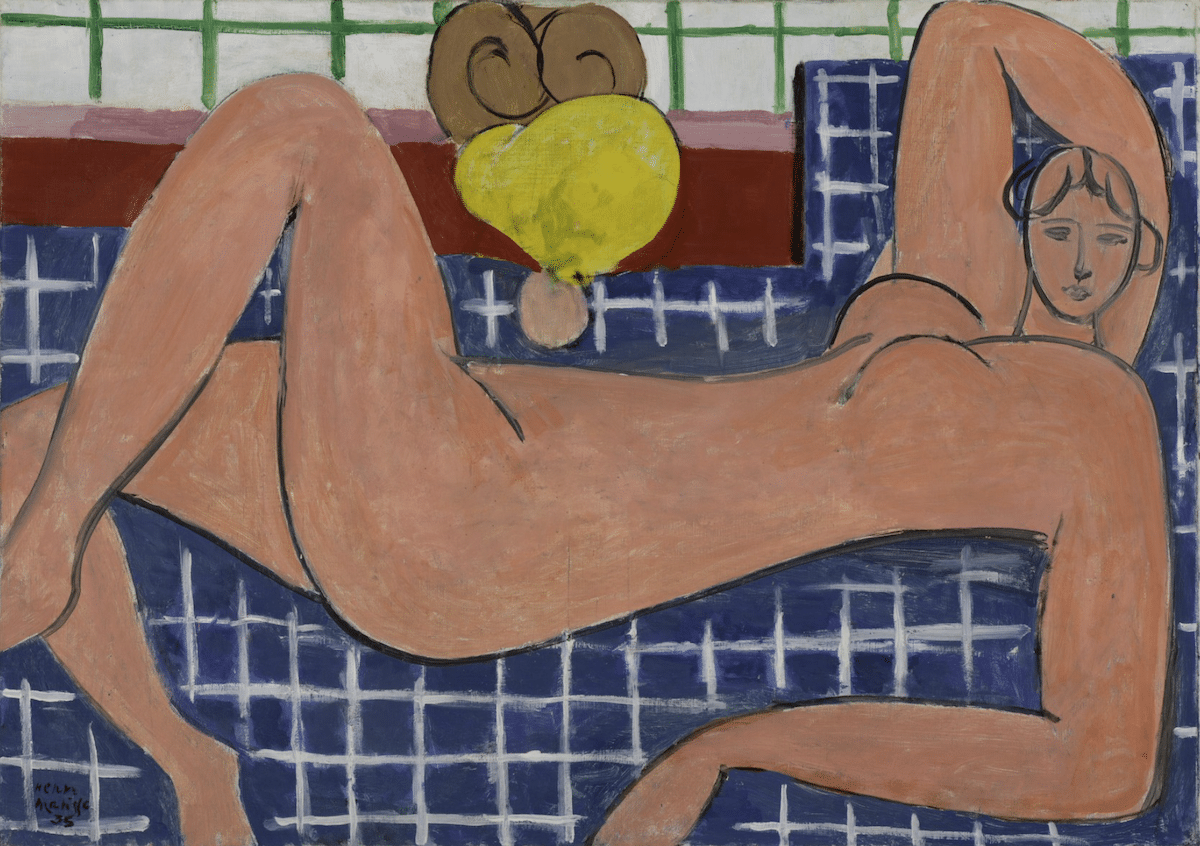
Henri Matisse “Large Reclining Nude” 1935. 26 1/8 × 36 3/4 inches (66.4 × 93.3 cm). Oil on canvas Baltimore Museum of Art: The Cone Collection, formed by Dr. Claribel Cone and Miss Etta Cone of Baltimore, Maryland, 1950.258. © 2022 Succession H. Matisse/Artists Rights Society (ARS), New York.
The Philadelphia Museum of Art, in collaboration with the Musée de l’Orangerie in Paris and the Musée Matisse Nice, will present the first exhibition ever dedicated to the pivotal decade of the 1930s in the art of Henri Matisse (1869–1954), one of the giants of twentieth-century art.
Opening first in Philadelphia (October 19, 2022–January 29, 2023), the only United States venue, the exhibition Matisse in the 1930s will present more than 100 works, ranging from both renowned and rarely seen paintings and sculptures, to drawings and prints, to illustrated books. It will also feature documentary photographs and films. It will leave Philadelphia first for Paris and then for Nice.

